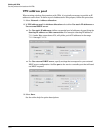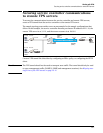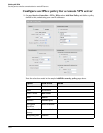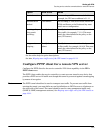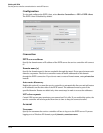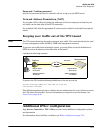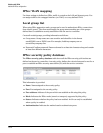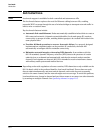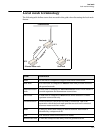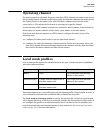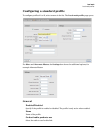
Local mesh
Introduction
Introduction
Note Local mesh support is available for both controlled and autonomous APs.
The local mesh feature replaces the need for Ethernet cabling between APs, enabling
expanded Wi-Fi coverage through the use of wireless bridges to transport network traffic in
hard-to-wire or outdoor areas.
Key local mesh features include:
Automatic link establishment: Nodes automatically establish wireless links to create a
full-connected network. A dynamic network identifier (local mesh group ID) restricts
connectivity to groups of nodes, enabling distinct groups to be created with nodes in the
same physical area.
Provides fall-back operation to recover from node failure. In a properly designed
implementation, redundant paths can be provided. If a node fails, the mesh will
automatically reconfigure itself to maintain connectivity.
Maintains network integrity when using DFS channels. In accordance with the
802.11h standard, dynamic frequency selection (DFS) detects the presence of certain
radar devices on a channel and automatically switches the network node to another
channel if such signals are detected. 802.11h is intended to resolve interference issues
with military radar systems and medical devices.
Note Depending on the radio regulations of some countries, DFS channels are only available on the
802.11a band, which is the preferred band for local mesh backhaul. If more than one node
detects radar simultaneously and must switch channels, each node does not necessarily
switch to the same channel, and the network might never reconverge. To avoid this problem,
local mesh detects a change in channel and provides a means to reconnect on other channels
by scanning on multiple channels. See Operating channel on page 13-5.
13-2



